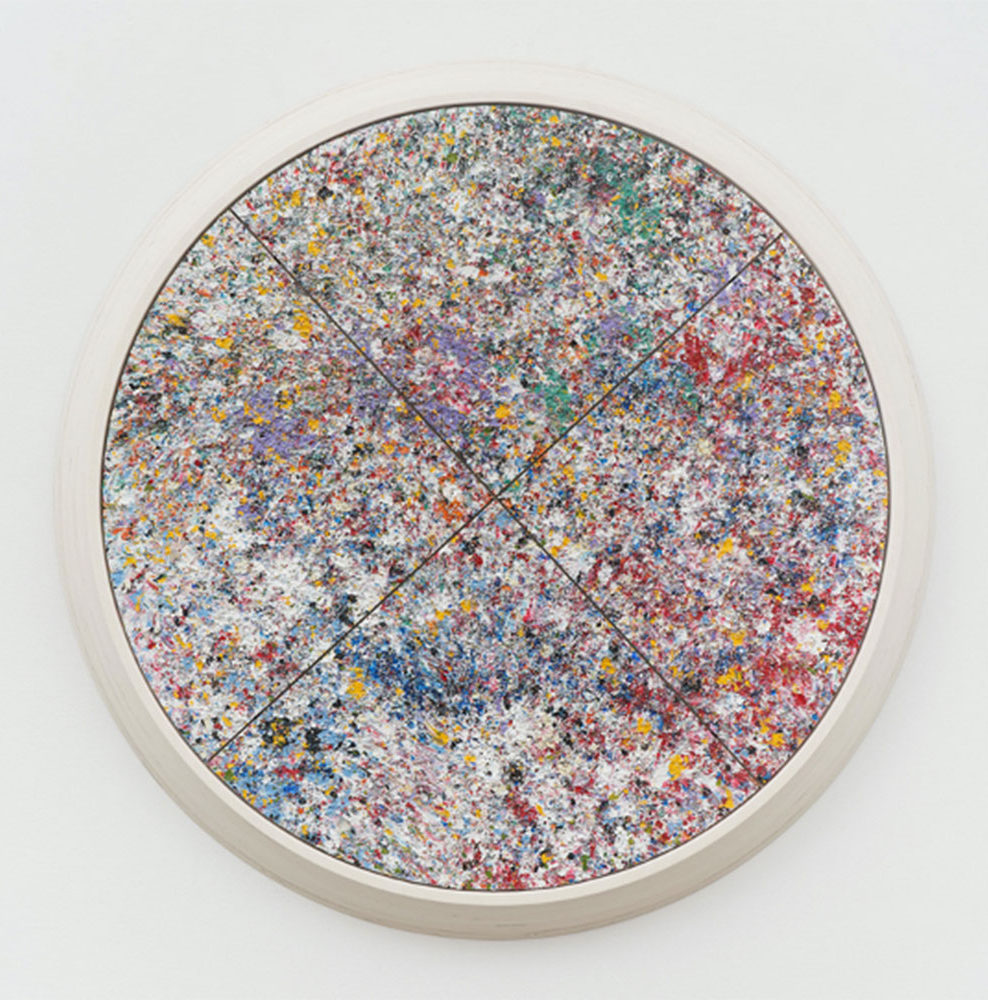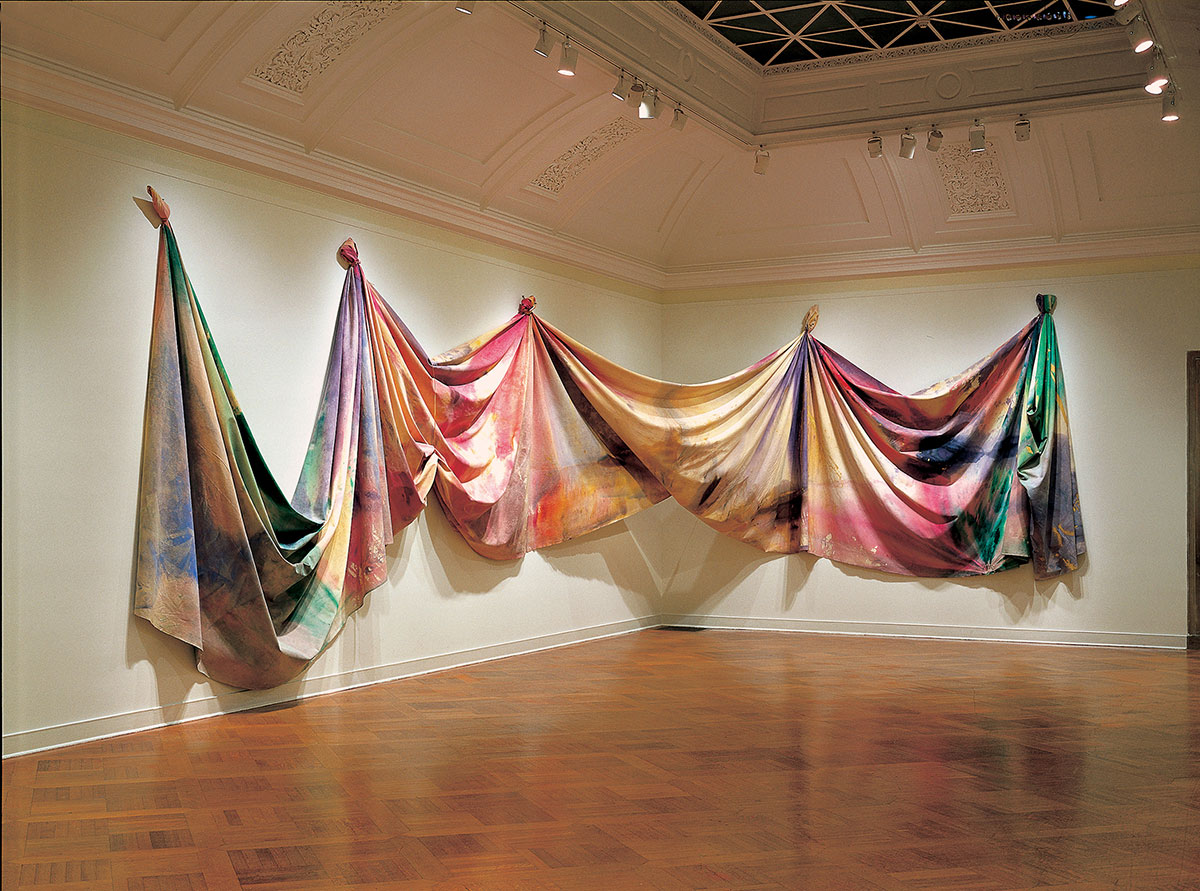ART CITIES: N.York-Sam Gilliam
 Sam Gilliam is a leading African American abstractionist, and a key figure of American post-war painting. As an innovator within the Washington Colour School, Sam Gilliam’s art pushed the boundaries of color field abstraction. He is recognized as the first artist to introduce the idea of a draped, painted canvas hanging without stretcher bars around 1965. This was a major contribution to the Color Field School. Recent works in various media continue to blur the lines between painting and sculpture.
Sam Gilliam is a leading African American abstractionist, and a key figure of American post-war painting. As an innovator within the Washington Colour School, Sam Gilliam’s art pushed the boundaries of color field abstraction. He is recognized as the first artist to introduce the idea of a draped, painted canvas hanging without stretcher bars around 1965. This was a major contribution to the Color Field School. Recent works in various media continue to blur the lines between painting and sculpture.
By Efi Michalarou
Photo: Hirshhorn Museum
In the 60 years since moving to Washington, Sam Gilliam has produced a prolific body of abstraction across media through which he has continually pursued new avenues of artistic expression. He initially rose to prominence in the late 1960s making large, color-stained manipulated, unstretched canvases. Gilliam continues to experiment with staining, soaking and pouring pigments, elaborating on the process-oriented tradition of Morris Louis, Kenneth Noland and other Washington Color School artists. In 1972, Gilliam represented the United States at the 36th Venice Biennale, and returned in 2017 with “Yves Klein Blue,” a draped work that welcomed visitors to the Venice Giardini. Gilliam’s approach focuses keenly on the cornerstones of abstraction—form, color and material—from which he creates artworks that reflect his career-long engagement with art history and the improvisatory ethos of jazz. Sam Gilliam’s solo exhibition “Full Circle” in Hirshhorn Museum, pairs a series of circular paintings (or tondos) created in 2021 with “Rail” (1977), a landmark painting in the Hirshhorn’s permanent collection. The exhibition reflects the breadth of his multilayered practice and mark the first exhibition in Gilliam’s chosen hometown of Washington, D.C., since 2007. Sam Gilliam’s most recent engagement with the Hirshhorn reflects his tireless propulsion of the through lines of abstraction. His tondos expand the body of beveled-edge abstract paintings that Gilliam first pioneered in the 1960s. Ranging in size from 3 to 5 feet in diameter, each tondo begins with a beveled wood panel, which the artist loads with layers of dense, vibrant pigments, their aggregate effect heightened through the addition of thickening agents, sawdust, shimmering metal fragments, wood scraps and other studio debris. Using a stiff metal rake along with more traditional tools, Gilliam then abrades, smears and scrapes the coarse surfaces to reveal a constellation of textures and colors below. The series is shown alongside “Rail” (1977), a stellar “Black” painting by Gilliam in the Hirshhorn’s collection work that marks some of the artist’s earliest experiments with pronounced materiality. With its immense scale of more than 15 feet in length, stained underpinning, pieced canvas structure and deep tones, “Rail” offers a resonant counterpoint to the artist’s recent tondos.
Upon leaving high school, Sam Gilliam enrolled at the University of Louisville (UL) and received a Bachelor of Arts degree in Fine Arts in 1955. He presented an entire solo exhibition at the university as part of his qualification for graduation. Gilliam was drafted into the United States Army in 1956. Upon receiving an honorable discharge in 1958, he resumed art studies, earning a Master of Arts degree in painting at the University of Louisville in 1961. In 1965, while an instructor of painting at the Corcoran School of Art in the District of Columbia, Gilliam became the first artist to introduce the idea of a draped, painted canvas hanging without support. In 1984, he became a professor of painting at Carnegie Mellon University in Pennsylvania. While Gilliam was developing his reputation as an artist, he challenged what he perceived as unfairness in the art establishment. In 1971 Gilliam boycotted a Whitney Museum art exhibition in solidarity with the Black Emergency Cultural Coalition of New York as a protest against the museum for its refusal to consult with black art experts in selecting art for the show. Also, that year, Gilliam received the prestigious Guggenheim Memorial Foundation Fellowship. A year later, in 1972, he became the first African American artist to represent the United States at the Italian Società di Cultura la Biennale di Venezia, an international art exhibition in Venice, Italy. Gilliam was commissioned in 2016 to produce a work as part of the grand opening of the Smithsonian National Museum of African American History and Culture in the District of Columbia. The following year, 2017, he exhibited at Italian Società di Cultura la Biennale di Venezia for the second time in the Central Pavilion (Giardini) and the Arsenale in 2017.
Photo: Sam Gilliam, X for X, 2021, acrylic and mixed media on panel in beveled frame, 48 x 48 x 4 inches (121.9 x 121.9 x 10.2 cm). Photo: Jonathan Nesteruk. © 2022 Sam Gilliam /Artists Rights Society (ARS), New York
Info: Curator: Evelyn Hankins, Hirshhorn Museum and Sculpture Garden, Independence Ave SW &, 7th St SW, Washington, DC, USA, Duration: 25/5-11/9/2022, Days & Hours: Tue-Sun 10:00-17:30, https://hirshhorn.si.edu/

